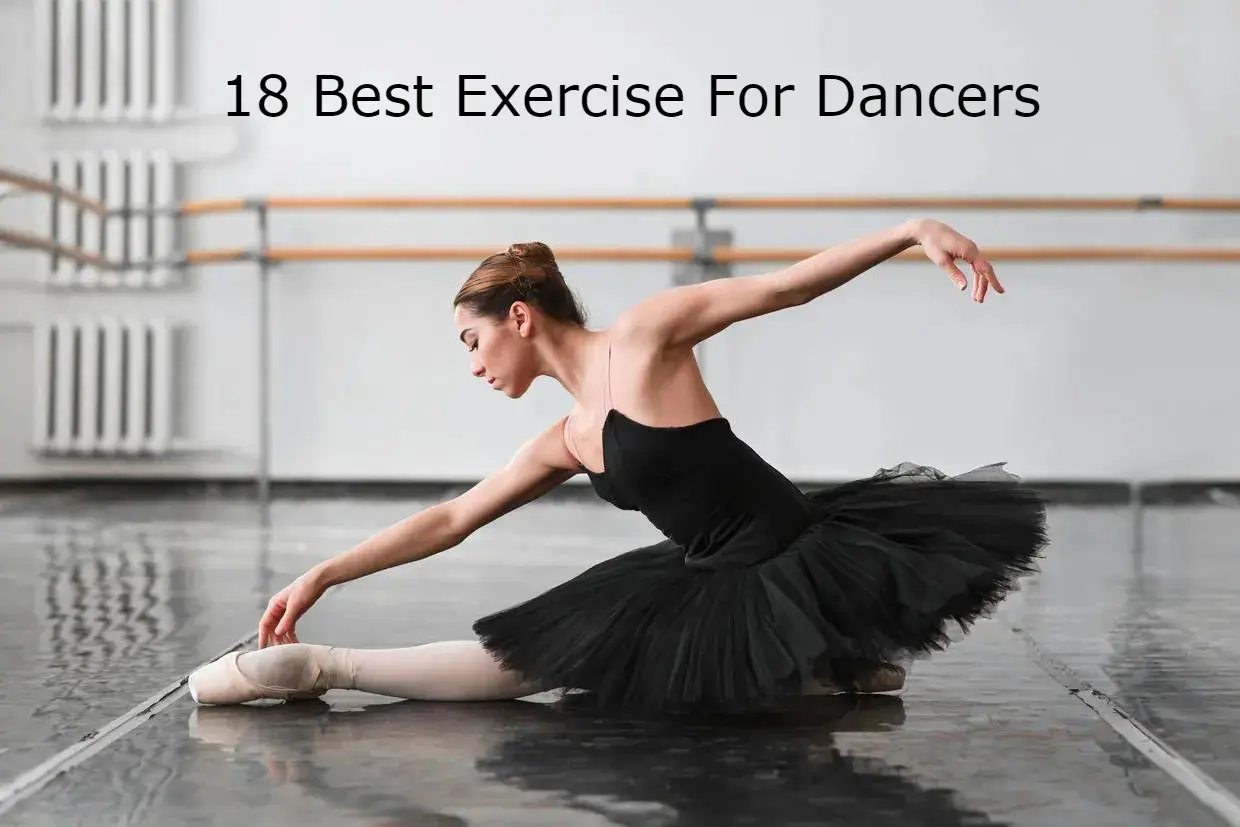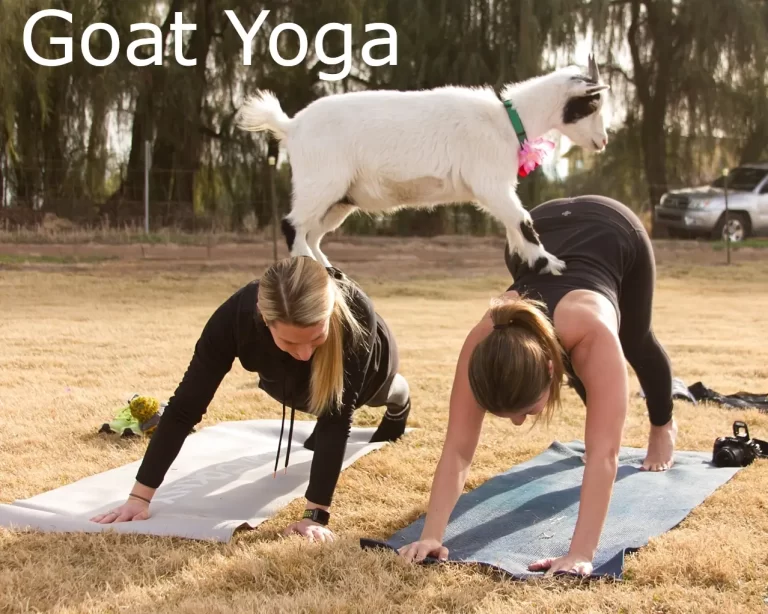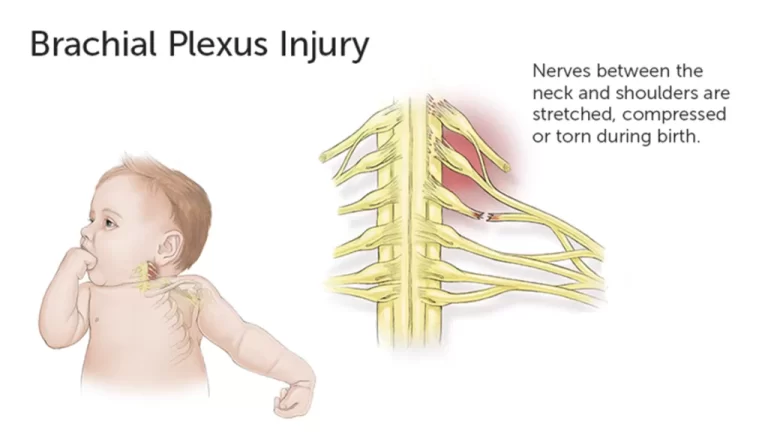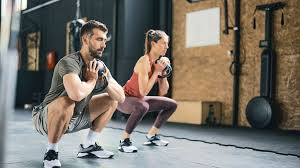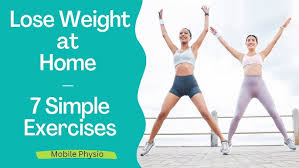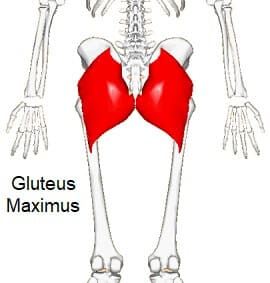18 Best Exercises for Dancers
Table of Contents
Introduction
Dancers require a unique combination of strength, flexibility, endurance, and balance to excel in their art form. The best exercise routines for dancers focus on enhancing these specific attributes while also addressing the demands of various dance styles.
- It requires a lot of practice, as anyone who has ever wished to become a better dancer.
- However, did you know that you may work on your dance skills with certain exercises?
- We’ll talk about some workouts in this blog article that can help you improve as a dancer.
- These workouts are intended to improve strength, flexibility, and balance basically, all the components of movement and advanced dance technique.
- Continue reading for some fantastic workouts that can help you advance your dance abilities, regardless of where you are in the process.
- Especially in ballet, our feet are very important in dancing.
- To perform to their best ability, they must be able to move, be powerful, and be in alignment.
- Dancing is a physical exercise that necessitates a strong mental-physical connection by definition.
- Elite dancers put their bodies through the same level of conditioning as Olympian athletes to succeed in their jobs.
- But not just pros need to maintain their physical fitness.
- Body conditioning is beneficial to dancers of all styles and skill levels, and without it, the kind of care and upkeep that comes with that conditioning.
- A career in dancing will almost certainly have a brief and unpleasant lifespan.
- Here are some of the greatest conditioning exercises for dancers to help you stay injury-free, achieve development, and succeed in your dance profession.
- Dancing is a physical exercise that necessitates a strong mental-physical connection by definition.
- Elite dancers put their bodies through the same level of conditioning as an Olympian athlete to succeed in their jobs but not just pros need to maintain their physical fitness.
- Body conditioning is beneficial to dancers of all styles and levels of expertise, and without the kind of care and maintenance that goes along with it, a dancer’s career would undoubtedly have a brief and unpleasant lifespan.
- Here are some of the greatest conditioning exercises for dancers to help you stay injury-free, achieve development, and succeed in your dance profession.
What Is Cross-Training?
- Cross-training is the deliberate practice of participating in two or more sports in order to improve one’s performance in their primary sport.
- As an illustration, consider this:
- Cross-training is frequently recommended for runners.
- Running emphasizes muscle endurance, but it also calls for strong bones and muscles.
- Thus, it is advantageous for runners to increase their strength so that their bones do not weaken and result in common problems like shin splints, and their muscles tire more slowly.
The Benefits of Cross-Training for Dancers
- We may look at every aspect of a regular dancing lesson to see how cross-training can help.
- Consider this: the framework of a dance class provides cardio and endurance training; balances are taught throughout; agility occurs in center combinations; and flexibility is honed during a stretch, Think about these:
- Training for mobility and flexibility encourages lovely extensions.
- Strength training helps you stay flexible and makes sure the right muscles are used to keep you safe from harm and help you perform at your best.
- Training in cardio and endurance makes it possible to dance for extended periods of time without tiring.
- You can move swiftly and effortlessly with agility training, which is frequently taught from an early stage in dance instruction.
- Training in balance and stability reduces the risk of injury, encourages safety when performing en pointe, and produces exquisite equilibrium when doing center exercises.
- However, there is one training component that could be overlooked.
Strength Training for Dancers
- Although there are many different ways to practice strength training, it usually involves applying resistance to your body in some way.
- Your muscles will be more motivated to work with the additional force as a result, increasing your strength.
- Contrary to what many people think, this refers to more than only weights. It could also be:
- Kettlebells
- Resistance Loops
- Resistance Bands
- Bodyweight
- Barbells
- Suspension Weight Training (TRX)
- Medicine Balls
- Slam Balls
- BOSU Balls
- BOSU Balance Trainer
- Resistance Sliders
- And of course the notorious dumbbells and workout machines
Why should dancers incorporate strength training?
- Young dancers (and even older ones) frequently sustain injuries! Strength training is primarily about preventing injuries.
- Strength training can help avoid a lot of tendinitis, popping, and pinching situations.
- Dancers learn how to use the right muscles to perform a movement through cross-training.
- The capacity to move more deliberately and with greater care comes with this training.
- Second, cross-training improves performance all around! Is it difficult to stand up en pointe? Do balances present a problem? Do you have success doing splits but struggle to raise your leg over ninety degrees? Or do you not activate your core throughout the class? If any of these apply to you, it’s time to think about strength training!
When is the ideal period for strength training in dance?
- Since this is customized, some trial and error will be necessary.
- However, if you’ve never done any strength training before, I’d suggest doing some light lifting BEFORE class.
- By doing this, you’ll encourage your muscles to contract correctly and become warmed up for class.
- You may be too tired after class and make poor movement choices.
- Recall that creating a cross-training regimen doesn’t have to be difficult.
- It will actually make your dance less complicated.
- Imagine having beautiful extensions that are adequately supported by muscles rather than gripping onto tendons, being able to keep balance for extended periods of time, and not puffing and huffing after center combinations.
- It would be plenty to only add 10–20 minutes of strength training a couple of times a week, especially when you first start out.
4 Easy Exercises for Strong Dancers
The Theraband
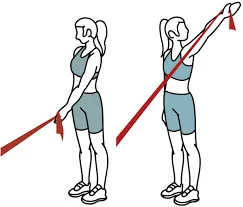
- Your right leg should be straight out in front of you while you sit on the floor.
- Position the theraband (or any other elastic band) such that it encompasses the toes and the ball of the foot.
- Using both hands, grasp the ends of the theraband independently.
- Put your foot in its fully extended position, keeping your knee straight and raised, and your foot level on both sides.
- Verify that neither foot side is pulled back more than the other.
- Stretch the foot’s arch to a demi-pointe posture.
- Maintain a fully extended and spreading toe position.
- Next, while maintaining the foot’s alignment with the shin, extend the toes as well.
- To reverse the action, spread and flex your toes while keeping your foot’s arch extended, and then completely extend your foot.
- To maintain proper foot alignment, take your time through each phase of the exercise.
- After 15 reps, switch to the left leg and continue again.
- With practice and time, increase the amount of extensions and flexions
Doming
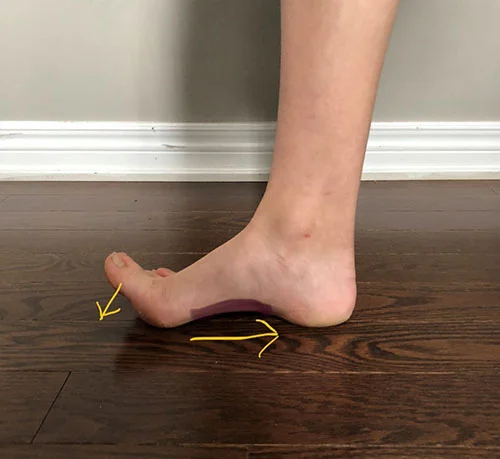
- You may do this workout while sitting or while standing.
- Don’t move the foot off the ground.
- After spreading your toes and metatarsals (the bones that go through your foot’s arch) as far as you can, raise your foot’s arch as high as you can.
- Keep your toes extended and pull them below; avoid balling them up.
- Let go and do it again.
- Increase the number of repetitions gradually, starting with 10 on each side.
Ball Exercise
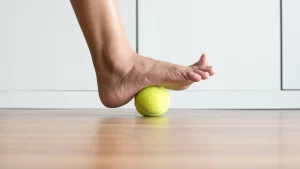
- Place a tennis ball between your ankles while standing with your feet parallel.
- With the ball between the ankles, extend your toes, raise your knees, and gradually ascend to the demi-pointe.
- Raise your heels as high as you can while still keeping your toes spaced apart.
- Repeat after lowering the heels.
- Perform 20 cautious, moderate repetitions, then gradually increase the quantity.
Foot Alignment for Dancers En Pointe

- Foot alignment is crucial for proper technique and safety when dancing en pointe.
- The foot is correctly positioned with weight over the pointed toes in the first image, and the toes are extended rather than curled under.
- Instead of drawing back over the heel, the shinbone is immediately over the toes.
- The second picture illustrates how to arrange the foot correctly in a demi-pointe, with the heel raised and the foot’s arch rising straight up with the shin.
- The third picture shows improper weight placement; the arch is lowering toward the floor and the toes are curled under.
The 10 Best Exercises and Stretches to Increase Flexibility for Dancing
Standing Hamstring Stretch
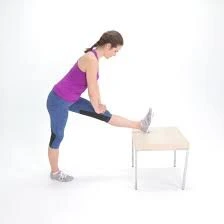
- The neck, back, glutes, hamstrings, and calf muscles all benefit greatly from these flexibility exercises for dancers.
- Place your feet hip-width apart and take a lofty stance to start.
- With your arms by your sides, slightly bend your knees.
- Breathe out as you bring your head down to the floor and sag forward from the hips.
- While you perform these dancing stretches, try to maintain a relaxed head, shoulders, and neck.
- Encircle the rear of your legs with your arms and hold.
- It is recommended by experts to hold a stretch for a duration of 10 to 3 minutes.
- You should dedicate additional time to stretching this area as part of your dancer workouts for flexibility if you find that you want to release as soon as you enter a stretch.
- After maintaining your stretch for the desired amount of time, bend at the knees and roll back up to standing.
Piriformis Stretch
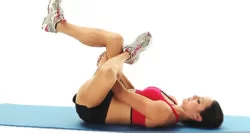
- There is a muscle outside the butt called the piriformis.
- The hip rotator is deep within the body.
- Since your hips move a lot due to your deep internal rotators, stretching these muscles needs to be a regular component of your ballet practice.
- With both legs out in front of you, take a seat on the floor.
- Lay your left foot flat on the ground next to you and cross your left leg over your right.
- Next, put your left hand behind your back on the ground.
- Press your left leg to the right while placing your right hand on your quadriceps or bringing your elbow near your knee.
- When you are stretching to develop leg flexibility correctly, you should feel a twist in your body.
Lunge With Spinal Twist
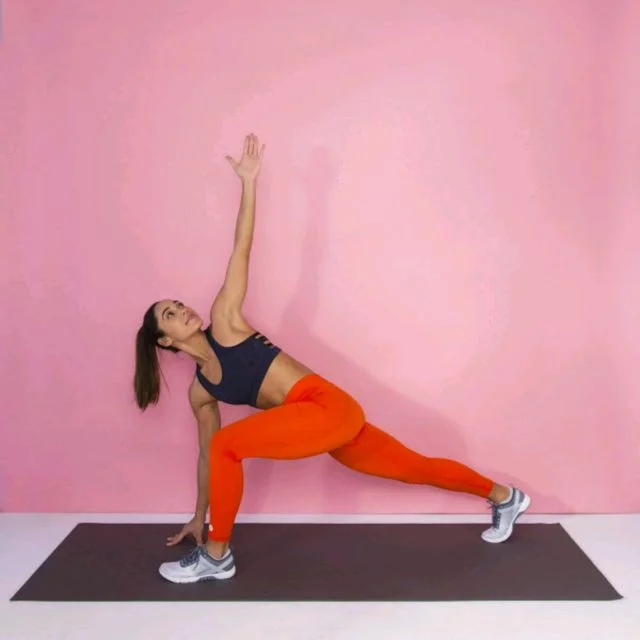
- This dancer’s flexibility stretch helps enhance mid-back mobility and opens up the hips, both of which are essential for ballet spins.
- Step forward with your left foot, keeping your feet together at first.
- At this point, your feet need to be spaced apart.
- As though you were lunging, flex your left knee.
- Maintain a straight right leg behind you. Your toes need to be pointing towards the earth.
- Your right thigh will feel stretched.
- Now rotate your upper body to the left while placing your right hand on the floor next to you.
- As though attempting to touch the ceiling, extend your left arm toward the sky.
- Stretch this dancer while holding on to the
- opposite side.
Triceps Stretch
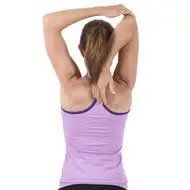
- Dancers frequently forget to deeply extend their arms.
- While most dancers concentrate on developing flexible legs, many ballet techniques also need flexible arms.
- Standing tall with your feet hip-width apart, perform a triceps stretch.
- Raise your hands over your head.
- Reach your hand behind your head to touch the upper center part of your back while bending your right elbow.
- For a more intense stretch, you might slowly bring your elbow up toward your head.
- Your shoulders, back, triceps, and neck should all feel stretched.
- Once you have finished holding the stretch, switch to the opposite side.
90/90 Stretch
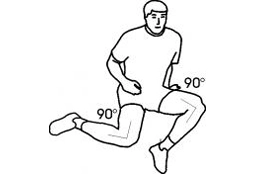
- Because it stretches both hips simultaneously, this is an excellent flexibility exercise for dancers as well.
- Your right knee should be bent at a 90-degree angle in front of your torso while you sit.
- Your left foot should be facing left, and your foot should remain flexed.
- Place your left knee to the left of your torso and keep your leg flat on the floor.
- To turn your foot to face behind you, bend your knee. Don’t forget to maintain this foot’s flexion.
- Make every effort to maintain your right glute on the ground while bringing your left glute as near to the floor as you can.
- If you have been dancing a lot and your hips or glutes are really tight, this might not be achievable.
- Repeat on the other side while holding the stretch.
Frog Stretch
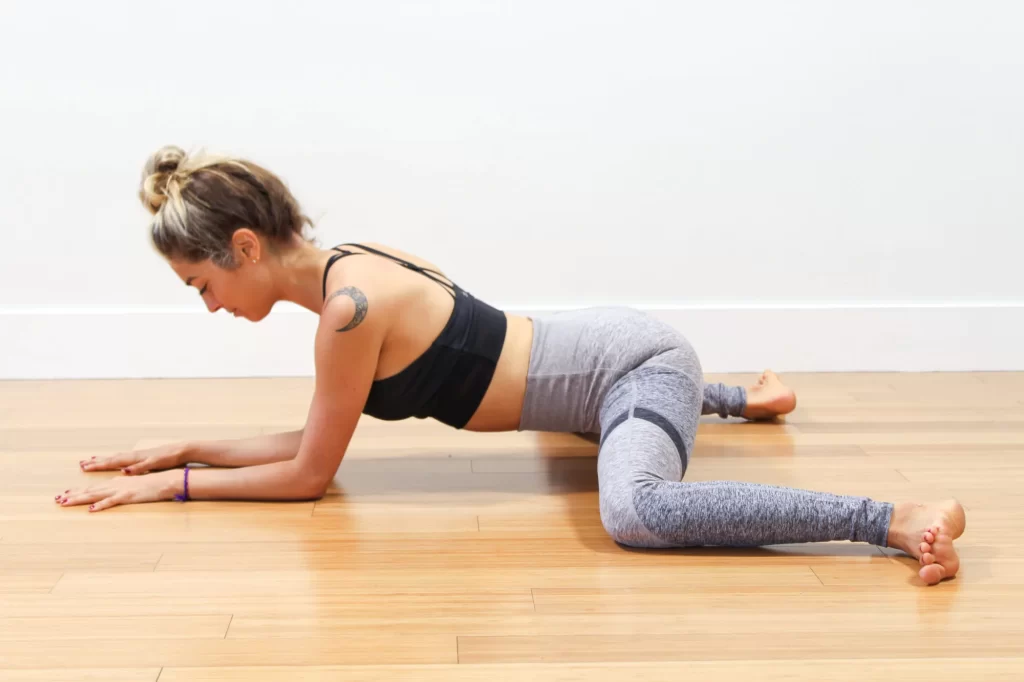
- For dancers, sitting cross-legged is another way to increase flexibility.
- Hip tightness might result from crossing your legs.
- In the event that you do find yourself sitting cross-legged frequently, try this stretch.
- Sliding your knees wider than shoulder-width apart, go down on all fours behind yourself.
- Extend your toes and place the inside border of your thigh on the ground.
- Keep your feet level on the floor and rotate your hips back toward your heels.
- For a more intense stretch, try switching from your hands to your forearms.
Butterfly Stretch
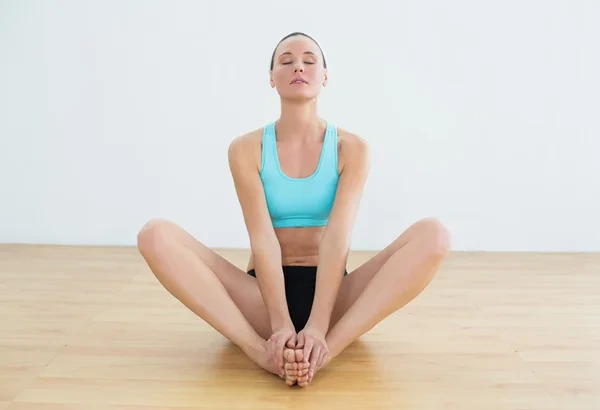
- This easy dancing stretch works wonders for the thighs, back, hips, and glutes.
- Place your soles together and sit on the floor with your back straight.
- You ought to be bending your knees to the side.
- As you progressively descend your upper body toward your feet as low as possible while simultaneously pressing your knees into the floor, hold your ankles or your feet and contract your abs.
Shoulder Squeeze
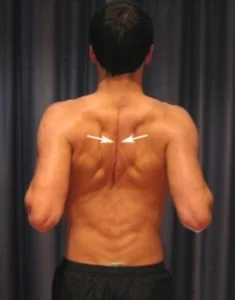
- This dancer’s stretching exercise helps to relax back stress and correct bad posture.
- With your feet flat and knees bent, take a seat on the floor.
- Arms should be extended and straightened as you place your hands behind your lower back.
- Take a few seconds to clench your shoulder blades together, then release them.
- Do this stretch five to ten times over.
Side Bend
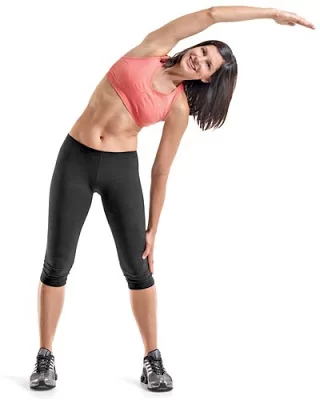
- Dancers may maintain their inner thighs and groin muscles supple with this simple stretching technique.
- Bend down on the ground and bring your legs together.
- Maintain a rigid core and a straight back.
- Extend your left leg laterally.
- Place your left arm on your left leg and raise your right arm.
- Bend your right arm and torso gently to the left side of your body.
- As you hold the stretch, try to maintain your hips looking forward.
- Next, go to the opposite side.
Neck Stretch
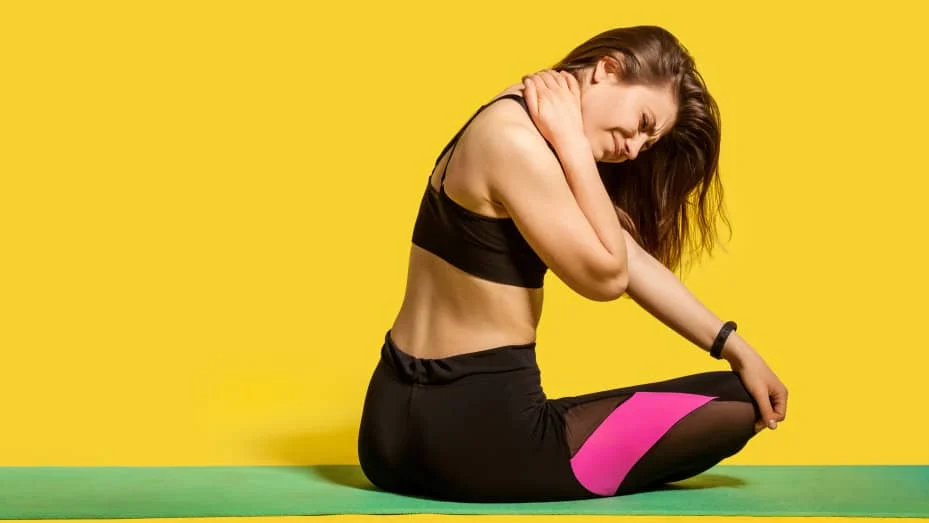
- Very few dancers remember to extend their necks.
- Everyday neck exercises that improve flexibility have a beneficial effect on the rest of your body.
- Reach down to your right shoulder with your right ear extended and hold the stretch longer, apply pressure on your head.
- Finish the stretch on the opposite side when you’re done.
Balance & Stability Exercises For Dancers
- This set of exercises will assist in building the strength in the gluteal and abdominal wall muscles required for improved stability during dancing.
- Working on these muscles is crucial because they support the legs and move the bones to improve movement fluidity.
- To attain a more elegant appearance, a dancer must thus have the power to balance their torso during leaps as well as when bending and extending during a performance.
- Gaining strength in your glute muscles can increase your acceleration and speed as well as enable you to do stronger hops and leaps when dancing.
- Stronger glutes also enhance hip extensions and internal and external rotation, which are important for a variety of
- dancing techniques, including arabesques and battements.
- Additionally, you may increase endurance and lessen your risk of lower back and pelvic floor issues by strengthening your glutes.
Single Leg Balance & Turn Out
- Enhancing knee alignment is beneficial for balance and weight distribution, and this exercise will assist with that.
- It is simpler for dancers to shift their body weight from side to side when their knees are aligned properly, which puts the weight in the center of the body.
- This exercise will also improve your entire body by working your external rotation for a greater turnout, as well as by strengthening your core and developing single-leg balance.
Bac Leg Lift From Bear Pose
- Bear Pose is another method to completely engage the body.
- While actively engaging the gluteal muscles with each movement, this position will assist in strengthening the spine, upper body, and core to maintain stability.
- This workout gives dancers the chance to focus on the general control of the legs necessary for heights during performances in addition to building up their entire body.
Arm Raise From Bear Pose
- Alternating arm lifts is another way to enhance the benefits of Bear Pose.
- This will be an intense workout that targets certain areas of the upper body.
- Maintaining a sophisticated and powerful port de bras may be achieved by performing arm rises.
March With Resistance Band
- The whole abdominal wall and upper back will be worked during this final workout.
- Additionally, adding the resistance band will work your quadriceps and side glutes.
- Stronger quadriceps will aid in greater leaps and help you balance and stay stable.
- Strong quadriceps can reduce the chance of injury by reducing joint stress and facilitating gentler landings.
How to Create the Perfect Dance Workout Plan
- Are you trying to find a solution to become in the greatest shape of your life and enhance your dancing performance? A well-designed dancing exercise program may be the ideal means of achieving this.
- Whether you’re a novice or an expert dancer, achieving your fitness goals and becoming the dancer you want to be maybe facilitated by having a personalized training plan.
- We’ll go over how to design the ideal dance exercise program in this blog article, giving you the resources and information you need to advance your dancing.
Cardio Warm-Up
- A successful dancing exercise program must include a cardio warm-up.
- A few minutes of aerobic activity at the beginning of your session can assist in raising your heart rate and warm up your muscles so you can go on to more difficult dancing techniques.
- During some dynamic stretches, such as high knees, grapevines, and spontaneous running, your dance instructor could guide the group.
- Use a little trampoline or jump rope, jumping jacks, or other exercises to intensify your warm-up.
- To further intensify your exercises, you can also use modest weights.
- Recall that the purpose of your aerobic warm-up is to prepare your body for training without depleting it.
- During this time, be sure to remain hydrated and maintain breathing steady.
Isolation Drills
- Any effective dancing exercise program starts with a concentration on isolation.
- During isolation drills, you isolate particular body parts such as your arms or legs while keeping the rest of your body motionless.
- Exercises like arm circles, side steps, and hip circles may all help achieve this.
- Exercises involving isolation are excellent for strengthening specific muscles as well as enhancing balance and coordination.
- It is crucial to prioritize quality over quantity when it comes to solitary workouts.
- In this sense, working with a dance instructor may be advantageous as they can walk you through the correct technique and offer insightful guidance on which muscles to target.
- You may significantly improve your overall performance in the studio by devoting some time to mastering these workouts.
Strength Training
- Any dance exercise program should include strength training as it may aid with muscular growth, enhance general balance and coordination, and lower the chance of injury.
- Dancers can target different parts of their bodies with a range of strength training routines.
- Engaging with a dance instructor is an excellent method to receive tailored guidance on the most effective strength training routines for your unique dancing style and requirements.
- Dancers can benefit from strength training activities such as arm curls, planks, calf raises, squats, and lunges.
- Some dance exercises may be more or less useful than others, depending on the style of dancing you practice.
- Dancers can benefit from strength training activities such as arm curls, planks, calf raises, squats, and lunges.
- Some dance exercises may be more or less useful than others, depending on the style of dancing you practice.
- For example, planks and calf raises are particularly useful for building the muscles utilized in tapping if you’re a tap dancer.
- It’s crucial for contemporary dancers to concentrate on full-body movements like lunges and squats.
- Any dancer’s strength training regimen must include exercises that target their core strength in addition to routines that target particular muscle groups.
- Exercises like planks, crunches, and Russian twists help improve flexibility and balance while strengthening the core.
- As you incorporate strength training exercises into your dancing fitness regimen, it’s critical to focus on correct breathing methods and pay close attention to your form.
- To make sure you’re getting the most out of your workouts and performing the routines correctly, a dancing teacher may assist you.
Conditioning
- An essential component of any dancing exercise program is conditioning.
- It supports the growth of muscle stamina and agility, both of which are necessary for extensive dancing routines.
- It is important to create conditioning workouts that mimic the precise motions used in different dance forms.
- Putting various combinations of lunges, squats, kicks, leaps, and arm circles into a sequence is one approach to developing a conditioning exercise.
- For every exercise, try to complete three sets at different intensities.
- Start with a low-intensity warm-up, for instance, then go up in intensity during the second set, and end with a higher-intensity set.
- Try to finish the entire process in ten to fifteen minutes.
- It’s crucial to employ good form when performing conditioning activities in order to avoid injury and get the best benefits.
- When performing lunges or squats, make sure your hips are pushed back, your chest is up, and your back is straight.
- During any kicking activities, make sure your legs are bent at a 90-degree angle, and when you leap, always land with both feet on the ground.
- When doing arm circles, keep your arms close to your torso.
- Conditioning is a crucial component of every dancer’s exercise regimen.
- Dancers can enhance their general fitness level and develop specific muscles required in their routine by combining various
- combinations of lunges, squats, kicks, leaps, and arm circles.
- Just make sure you do these exercises with the right form and technique!
Cool Down
- Spend a few minutes stretching and cooling down your muscles after your workout.
- In addition to assisting your body’s transition from an active to a resting state, cooling down helps avoid the accumulation of lactic acid in your muscles, which can cause discomfort.
- Stretch lightly at first, concentrating on the main muscle groups you worked on during the workout.
- Breathe deeply as you hold each stretch for at least 30 seconds.
- This will assist you in de-stressing and easing physical tension.
- You may then wrap up with some more active stretches, such as walking lunges and butt kicks.
- After a tough workout, taking a few minutes to cool down can not only assist in minimizing discomfort but also help keep you motivated and energized for your next workout.
Different Exercises to Help You Become a Better Dancer
- It requires a lot of practice, as anyone who has ever wished to become a better dancer will attest.
- However, did you know that you may work on your dance skills with certain exercises?
- We’ll talk about some workouts in this blog article that can help you improve as a dancer.
- These workouts are intended to improve strength, flexibility, and balance basically, all the components of movement and advanced dance technique.
- Continue reading for some fantastic workouts that can help you advance your dance abilities, regardless of where you are in the process.
Benefits Of Dancing
- Enjoying pleasure and exercising at the same time is possible when you dance.
- It’s also a fantastic opportunity to mingle and meet new people.
- It can enhance your coordination, flexibility, and balance.
- Additionally, dancing helps strengthen bones and muscles, lower stress, and enhance heart health.
- Dancing is a fantastic hobby for people of all ages, whether you want to have fun or just want to get better at it!
Muscle Memory: What You Need To Know
- It is crucial to concentrate on building muscle memory while you are learning a new dance or honing an existing one.
- You can execute complicated actions without having to think about them thanks to muscle memory.
- This is due to the fact that muscles that are utilized frequently in a given activity will learn the movement and become automatic at doing it.
- This is the reason consistent practice is crucial for honing your dance abilities!
Exercises To Enhance Your Dancing Skills
After discussing the advantages of dancing and defining muscle memory, let’s look at some exercises that can help you become a better dancer!
Warm-Up: Get Your Body Ready For Dancing
- It’s crucial to warm up your body before beginning your dancing class or routine.
- Never undervalue the significance of warming up before dancing.
- You may become a better dancer by increasing your range of motion and releasing your muscles with a proper warm-up.
- It’s also critical to adequately warm up your body before performing a lot of high-impact workouts since this can prevent injuries.
- Thus, to prepare your body for action, spend some time doing some moderate stretching and mild aerobic workouts before you hit the dance floor!
Cardio: Get Your Heart Rate Up
- Cardio is essential for enhancing your dance abilities!
- Cardiovascular workouts aid in raising blood pressure and heart rate, which increases oxygen delivery to the body.
- Your energy and endurance levels are enhanced by this improved oxygen flow, which is beneficial when dancing.
- Cardio workouts come in a variety of forms that you may perform to enhance your dance abilities.
- Among the best examples are aerobics, swimming, riding, and running.
- Consult a fitness expert for guidance if you’re unsure about the best kind of aerobic activity for you.
Strength Training: Tone Your Muscles
- For dancers, strength training is just as vital as cardio.
- Exercises for strengthening your muscles might help you become more balanced and toned.
- This holds particular significance for individuals seeking to enhance their jumping and turning abilities, which are particularly critical to grasp when engaging in Latin dance training.
- Exercises that are beneficial for building strength include lunges, squats, and weightlifting. Seek advice from a fitness expert if you are unsure of how to do these exercises correctly.
Stretching: Increase Your Flexibility
- Lastly, dancers must make sure that their performance includes stretches.
- Stretching increases your flexibility, which is essential for performing intricate dance techniques and a prerequisite for becoming proficient in dance forms like swing dancing.
- It may also lessen the chance of getting hurt.
- To get more flexibility, you may stretch yourself in a lot of various ways.
- Stretches for the hamstrings, calves, and quadriceps are a few excellent examples.
- Seek advice from a fitness expert if you are unsure of how to complete these stretches correctly.
Cool-Down Exercises: Recovery
- It’s crucial to perform some cool-down exercises once your practice is complete.
- Exercises for cooling down aid in both injury prevention and your body’s recovery from the demanding action of dancing.
- A few effective cool-down activities are stretching, walking, and running.
- After your program, make sure to cool down for a minimum of five minutes to allow your body to heal.
Mastering Dancing Skills: Motivation And Concentration
- Dancing is a talent that requires practice and time to become proficient at.
- Even if it won’t happen immediately, you should still put in the effort and commitment to advance your dancing abilities.
- Maintaining motivation and attention is one of the most crucial things to keep in mind when training.
- This entails establishing reasonable objectives for oneself and adhering to your regimen.
- Finding a dancing partner or group to practice with may also be beneficial as you can encourage one another.
- Learning to dance also requires a lot of concentration.
- When you initially start out, it’s crucial to concentrate on the fundamental motions and steps.
- You may start including increasingly difficult steps into your practice as you go.
- However, always remember to take your time, get comfortable with each phase, and then go on to the next.
Conclusion
These exercises are excellent for strengthening the entire body as well as the targeted regions for stability and posture, such as the glute muscles and core. Dancers may achieve more balance and power in their movements and reach their maximum potential when performing when they have stronger muscles overall.
FAQ
The finest exercises for dancers to build their thighs, legs, and butt are squats and lunges. Dancers will be able to jump higher and land with more strength and flexibility if they perform lunges and squats. Strength in the core is crucial. Everything is strong and
connected because of our core.
Exercises like lunges and squats improve flexibility and balance in addition to strength. Due to their enhanced quad strength, these workouts help dancers jump higher and land harder. Starting with your body weight and gradually adding weights is a smart
technique.
2024: Nutrition for Dancers Dance Eatery
Damaged muscles may be repaired and rebuilt with the aid of protein (a typical response after vigorous dancing). Foods high in protein include legumes, beans, eggs, dairy and dairy substitutes, ancient grains, and pseudo-cereals (like quinoa). Fat is the last
macronutrient in a dancer’s fuel mix.
Reduce Weight: Dancing is a highly effective kind of exercise for burning fat and losing weight, as it incorporates full body movements burns more calories and it is good cardio too. Thus, compared to ballroom dancing, dance forms like hip hop, freestyle, Bollywood, Zumba, etc. often burn more calories.
The ectomorph dancer’s physique is nearly fragile due to its long, thin, lean, and slender shape. This type of dancer is usually very flexible and has great mobility. This body type is characterized by beautiful arabesques, great grand battements, and flexibility.
References:
- Wisung, E. (2020, October 16). Easy Exercises for Strong Dancers 3.0 – Feet – The Lewis Foundation of Classical Ballet. The Lewis Foundation of Classical Ballet. https://www.thelewisfoundation.org/2020/09/feet-easy-exercises-for-strong-dancers/
- Fine, R. (2023, July 5). Sustainable Cross-Training for Dancers. Dance Nutrition. https://dancenutrition.com/cross-training-routine-for-dancers/
- 10 Top Stretches and Exercises to Improve Dance Flexibility. (2023, August 3). Stelle World. https://stelleworld.com/blogs/news/10-top-stretches-and-exercises-to-improve-dance-flexibility
- Bruner, B. (2023, January 30). Balance & Stability Exercises for Dancers. Dance Buddy Shop. https://dancebuddyshop.com/blogs/dance-buddy-news/balance-stability-exercises-for-dancers
- Hall, T. (2023, April 11). How to Create the Perfect Dance Workout Plan. ASFA. https://www.americansportandfitness.com/blogs/fitness-blog/how-to-create-the-perfect-dance-workout-plan
- Types of Exercises to Improve Your Dancing Skills | Carolina Dance. (2022, March 10). Carolina Dance. https://carolinadance.com/about/news/types-of-exercises-to-improve-your-dancing-skills

